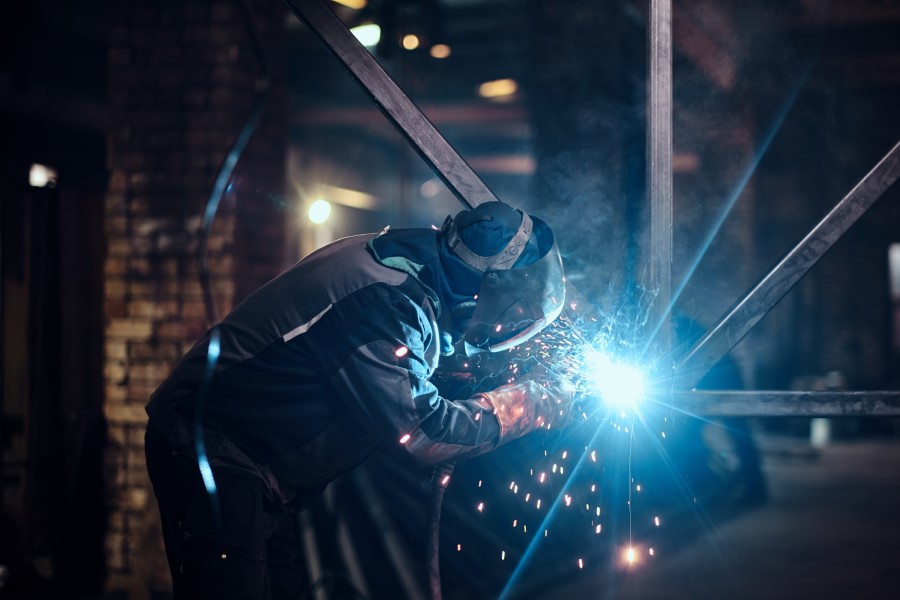Welding is a vital process in various industries, from automotive and aerospace to construction and manufacturing. Among the numerous welding techniques available, MIG, TIG, and Stick welding are the most commonly used. Each method has distinct characteristics, advantages, and applications, making them suitable for different tasks. This article explores the key differences between MIG, TIG, and Stick welding, helping you understand which process might be best for your specific needs.
MIG Welding (Gas Metal Arc Welding – GMAW)
Overview: MIG welding, or Gas Metal Arc Welding (GMAW), is a process that uses a continuous wire feed as an electrode and an inert or semi-inert gas mixture to shield the weld from contamination. This method is known for its ease of use and high welding speeds.
Key Characteristics:
- Gebruiksgemak: MIG welding is often considered one of the easiest welding techniques to learn, making it ideal for beginners. The continuous wire feed allows for smooth and uninterrupted welding, reducing the need for frequent starts and stops.
- Snelheid en efficiëntie: This method allows for fast welding speeds and high productivity, making it suitable for large-scale production and repetitive tasks.
- Schone lassen: The shielding gas protects the weld from atmospheric contamination, resulting in cleaner and more aesthetically pleasing welds.
- Veelzijdigheid: MIG welding can be used on a variety of metals, including steel, stainless steel, and aluminum, and is effective for welding both thin and thick materials.
Toepassingen:
- Automotive repair and manufacturing
- Fabrication of metal structures
- Home and DIY projects
- Industrial and production welding
TIG Welding (Gas Tungsten Arc Welding – GTAW)
Overview: TIG welding, or Gas Tungsten Arc Welding (GTAW), is a process that uses a non-consumable tungsten electrode to produce the weld. An inert gas, typically argon, is used to shield the weld area from contamination. TIG welding is known for its precision and ability to produce high-quality welds.
Key Characteristics:
- Precisie en controle: TIG welding offers superior control over the welding process, allowing for precise and detailed work. This makes it ideal for welding thin materials and complex joints.
- Kwaliteitslasnaden: The welds produced by TIG welding are exceptionally clean and strong, with minimal spatter and distortion.
- Veelzijdigheid: TIG welding can be used on a wide range of metals, including aluminum, stainless steel, magnesium, and copper alloys.
- Manual Dexterity Required: This method requires a high level of skill and manual dexterity, as the welder must use both hands – one to hold the torch and the other to feed the filler material.
Toepassingen:
- Aerospace and aviation
- Automotive and motorsports
- Art and sculpture
- Fabrication of piping systems
- Manufacturing of high-precision components
Stick Welding (Shielded Metal Arc Welding – SMAW)
Overview: Stick welding, or Shielded Metal Arc Welding (SMAW), is a manual welding process that uses a consumable electrode coated in flux to lay the weld. The flux coating decomposes during welding, providing a shielding gas and a layer of slag to protect the weld from contamination.
Key Characteristics:
- Veelzijdigheid en draagbaarheid: Stick welding is highly versatile and can be used in various positions (flat, vertical, overhead). It is also portable and can be used in outdoor and remote locations.
- Simplicity and Cost-Effectiveness: This method is relatively simple and inexpensive, with minimal equipment required. It is well-suited for welding thick materials and heavy steel structures.
- Tolerant of Dirty Materials: Stick welding is effective on dirty, rusty, or painted surfaces, making it ideal for maintenance and repair work.
- Slag Removal Required: The flux coating produces slag that must be chipped away after welding, which can add to the post-weld cleanup time.
Toepassingen:
- Construction and building infrastructure
- Reparatie en onderhoud van zwaar materieel
- Shipbuilding and marine applications
- Industrial fabrication and manufacturing
- Farm and ranch equipment repair
Comparing MIG, TIG, and Stick Welding
Gebruiksgemak:
- MIG-lassen: Easiest to learn and use, suitable for beginners and high-volume production.
- TIG-lassen: Requires significant skill and practice, best for detailed and precision work.
- Stoklassen: Moderate skill level, good for fieldwork and repair tasks.
Welding Speed:
- MIG-lassen: Fastest, ideal for high-speed production and repetitive tasks.
- TIG-lassen: Slower, focused on quality and precision over speed.
- Stoklassen: Moderate speed, depending on the complexity of the weld.
Quality of Welds:
- MIG-lassen: Clean, strong welds with minimal spatter when done correctly.
- TIG-lassen: Highest quality welds with excellent appearance and minimal defects.
- Stoklassen: Strong welds, but with more spatter and slag that need cleaning.
Versatility and Applications:
- MIG-lassen: Versatile for various metals and thicknesses, suitable for a wide range of applications.
- TIG-lassen: Highly versatile, best for thin materials and high-precision applications.
- Stoklassen: Extremely versatile for different environments and materials, ideal for outdoor and repair work.
Conclusie
Choosing the right welding method depends on your specific needs, the materials you are working with, and your skill level. MIG welding offers ease of use and speed, making it ideal for beginners and large-scale projects. TIG welding provides unmatched precision and quality, suitable for high-precision applications and thin materials. Stick welding stands out for its versatility and robustness, making it a go-to method for outdoor and repair work.
By understanding the differences between MIG, TIG, and Stick welding, you can select the appropriate welding technique that meets your requirements and enhances your welding capabilities. Each method has its unique advantages, and mastering them can open up a wide range of possibilities in the field of welding.

